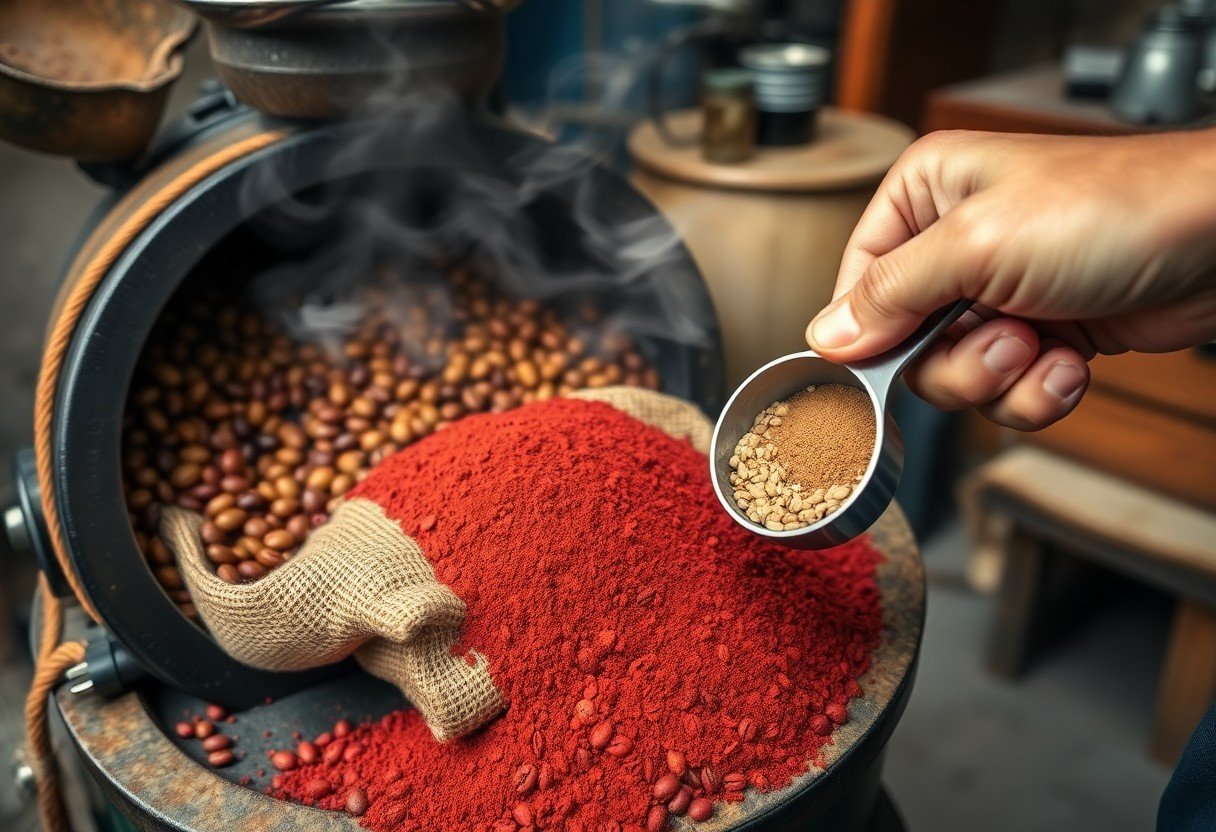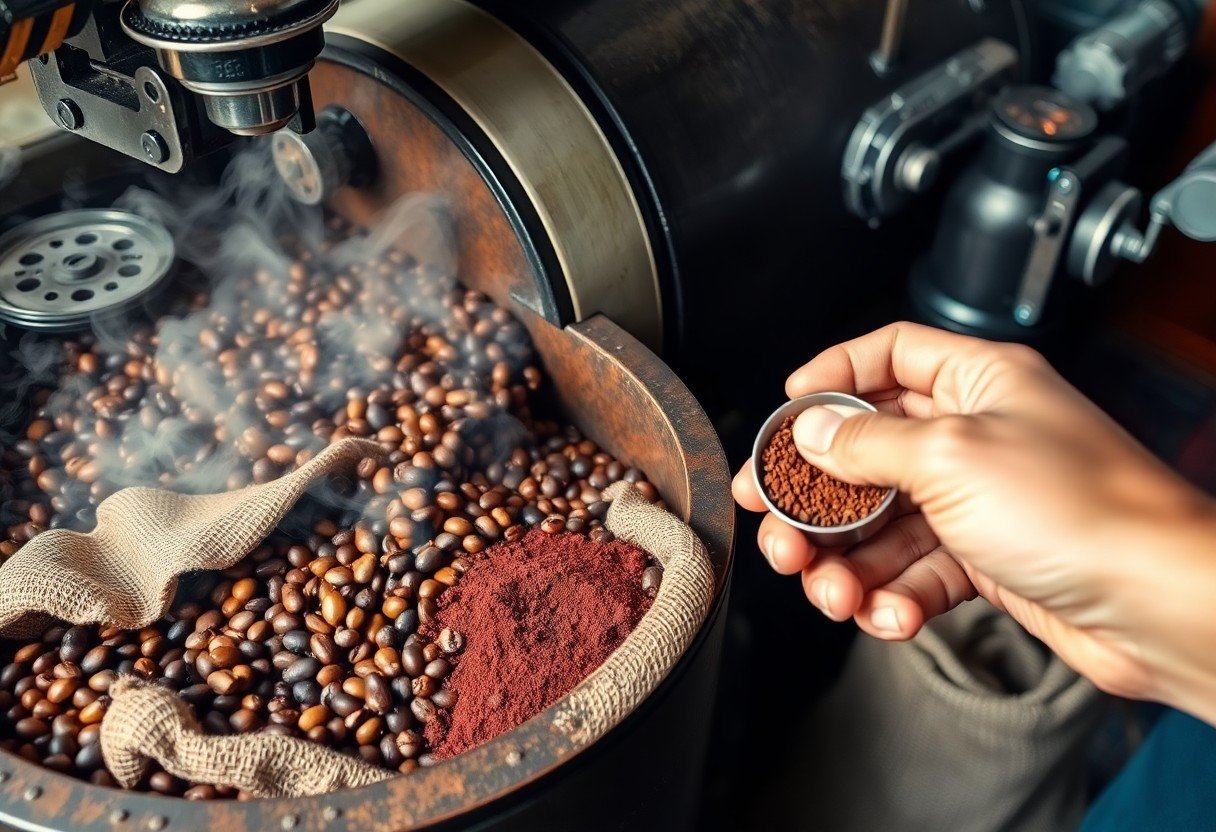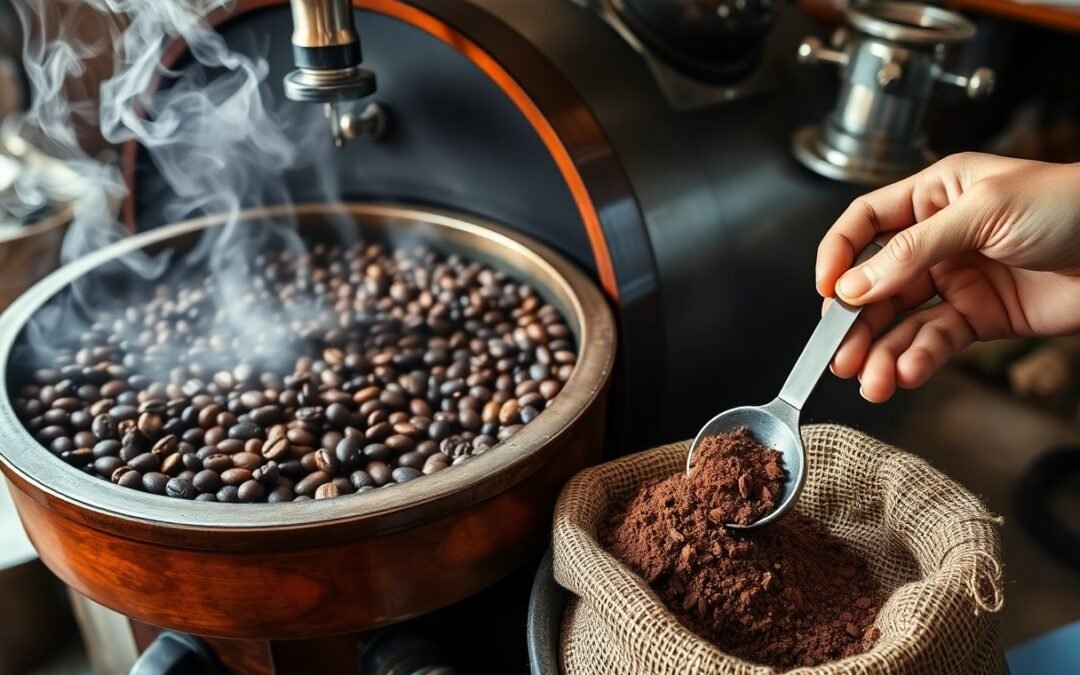It’s crucial to understand the role of volatile aromatics in artisan coffee, as these compounds significantly influence your coffee experience. They contribute to the complexity of flavors and aromas that make each cup unique. By exploring how these volatile substances develop during the roasting and brewing processes, you can enhance your appreciation for the artistry involved in crafting exceptional coffee. Learn how to identify and savor these aromatic profiles to elevate your enjoyment of artisan brews.
The Science of Aromatics: What Makes Them Volatile?
Volatile aromatics in coffee are the result of complex chemical reactions that occur during various stages, from growing to roasting. These compounds evaporate easily, contributing to the distinct flavors and aromas you experience when brewing. The combination of various molecular structures forms a rich tapestry of fragrant molecules, influencing sensory perception and your overall coffee enjoyment. Understanding these elements helps you appreciate the depth and complexity of artisan brews.
Chemical Composition and Behavior
The chemical composition of volatile aromatics includes a variety of organic compounds such as aldehydes, esters, and terpenes. Each compound contributes unique scents, ranging from fruity to nutty. For instance, 2-furfurylthiol imparts that familiar roasted aroma, while certain esters provide sweet and floral notes. Recognizing these compounds helps you identify the sensory profile of different coffees and enhances your tasting experience.
How Heat and Pressure Affect Volatility
Heat and pressure significantly impact the volatility of aromatic compounds. As temperature increases, molecules gain energy, transitioning from solid or liquid states to gases. Higher temperatures during roasting enhance the release of these aromas, making your coffee experience more vibrant. Conversely, pressure, particularly in brewing methods like espresso, can extract aromatics more efficiently, amplifying their presence in your cup.
The relationship between heat, pressure, and volatility is evident in espresso brewing. With temperatures ranging from 90 to 96 degrees Celsius and high pressure, your espresso machine accelerates aromatic extraction, yielding a concentrated flavor profile. This method contrasts with traditional brewing, where lower temperatures allow for a more gradual release of aromatics. Understanding these factors lets you experiment with different brewing techniques, emphasizing the flavors that resonate with your palate.
The Flavor Profile: How Volatile Aromatics Influence Taste
Volatile aromatics shape the flavor profile of artisan coffee, contributing to the complex sensory experience you encounter with each sip. These compounds interact with your taste buds, enhancing or overshadowing the inherent sweetness, acidity, and bitterness of the coffee. Factors like origin, processing methods, and roasting levels contribute to the diversity of these aromas, revealing unique tasting notes that make each coffee distinct.
The Role of Aromatics in Sensory Perception
Aromatics play a vital role in your sensory perception of coffee, often influencing your overall experience before the first sip. Your olfactory senses detect these volatile compounds, which can evoke memories and emotions, ultimately shaping your enjoyment and preference for specific coffees. The scents you identify can enhance your appreciation for the beverage, from fruity undertones to earthy depths.
The Interplay of Aroma and Flavor in Coffee Quality
The interplay between aroma and flavor significantly impacts your perception of coffee quality. Aromas create a pre-taste experience that informs your brain about what flavors to expect, leading to a more robust and engaging tasting experience. Specifically, studies indicate that nearly 75% of your sense of taste is derived from olfactory cues, underscoring the importance of volatile aromatic compounds in subjectively assessing quality.
This interplay can be observed when you taste different coffees side by side. For example, a fruity Ethiopian coffee often has bright citrus notes that are deeply connected to its aromatic profile, enhancing your expectation of sweetness and acidity. In contrast, a dark roast may present more muted aromatics, aligning with a heavier, chocolatey flavor that you perceive. The nuanced relationship between aroma and flavor not only elevates your coffee experience but also highlights the significance of volatile aromatics in identifying and appreciating quality artisan coffees.

Artisan Techniques: Crafting Aromatic Quality
Artisan coffee is a sensory experience driven by the intricate techniques employed to enhance aromatic quality. By focusing on each step of the process, from sourcing high-quality beans to employing precise roasting profiles, you can unlock the complex bouquet that characterizes exceptional coffee. Hand-selecting beans based on region and processing methods plays a vital role, while techniques such as small-batch roasting create unique flavor profiles that highlight volatile compounds, ensuring that each cup is truly special.
Roasting Methods that Enhance Volatility
The choice of roasting method directly influences the aromatic volatility of coffee. Using light to medium roast profiles tends to preserve delicate floral and fruity notes, allowing the aromatics to shine. Methods such as air roasting or using a drum roaster with minimal smoke can help maintain these volatile compounds, enhancing your coffee’s overall sensory profile. Experimenting with roast times and temperatures enables you to fine-tune the aromatic experience to suit your palate.
Brewing Techniques to Preserve Aromatics
Preserving aromatics during brewing is necessary for delivering the full flavor experience. Techniques such as using a French press or pour-over method allow you to control water temperature and contact time, which helps extract volatile compounds effectively. Maintaining freshness by grinding beans just prior to brewing further amplifies the aromatic qualities, ensuring that each cup reflects the intricacies of artisan craftsmanship.
Utilizing specific brewing techniques like the Chemex or Aeropress facilitates optimal extraction, promoting the release of aromatic compounds. Water temperature should ideally hover around 195°F to 205°F to avoid scalding and to enhance the flavor profile. Also, experimenting with brew ratios can help you discover the sweet spot for balancing acidity and sweetness, bringing out the intricate flavors present in the coffee. Ensuring your brew method aligns with the characteristics of the beans will enrich the aromatic experience in your cup.
Consumer Perception: The Value of Aroma in Artisan Coffee
Aroma plays a pivotal role in how you perceive artisan coffee, often acting as a primary factor in your overall enjoyment. When you engage with a brew, the volatile compounds released during brewing engage your sense of smell, establishing an emotional connection and setting expectations for flavor. The aromatic profile also communicates quality and craftsmanship, enhancing your perception of the coffee’s value before you even take a sip.
How Aroma Shapes Buyer Preferences
Your preferences in coffee can be heavily influenced by aroma, affecting choices from daily brews to special occasion selections. A rich, fruity fragrance may draw you to a lighter roast while a bold, nutty scent might lead you towards darker varieties. As aromas trigger memories and emotions, they significantly shape your purchasing behavior, as you subconsciously gravitate toward familiar and appealing scents.
The Marketing Power of Volatile Aromatics
Volatile aromatics serve as a powerful marketing tool in the artisan coffee industry, creating compelling narratives around products. Distinct aromas not only differentiate your preferred brands but also communicate the uniqueness of regional origins and processing methods. The right aroma can evoke a sense of place and craftsmanship, making the coffee more desirable and enhancing its market appeal.
Brands frequently capitalize on the marketing potential of aromas by using descriptive language that elevates the coffee experience. Terms like “caramel notes” or “floral undertones” resonate with you, creating an allure that can shift your purchasing habits. Artisan coffee companies often engage in sensory marketing by using scent in their storefronts or packaging design, further strengthening your connection to the product. By eliciting an emotional response through aroma, brands can build loyalty and encourage repeat purchases, ultimately boosting sales in a competitive market.

Sustainability and Aromatics: Growing for Flavor
Sustainable practices in coffee cultivation not only protect the environment but also enhance the aromatic potential of your brew. By focusing on biodiversity, shade-grown coffee farms promote a healthier ecosystem, allowing coffee plants to mature more slowly and develop complex flavor profiles. This approach ultimately results in beans with richer, more nuanced aromas, benefiting both the producer’s livelihood and your coffee experience.
The Impact of Farming Practices on Aromatic Profiles
Your choice of coffee farm can significantly influence the aromatic qualities you encounter in your cup. Methods such as organic farming and careful water management foster healthier plants, which can produce beans with heightened aromatic compounds. For instance, farms that practice less intrusive harvesting techniques often yield cherries with more vibrant flavors and scents, making your sipping experience far more enjoyable.
The Future of Sustainable Coffee and Aromatics
As consumer demand for sustainable coffee increases, many farmers are adopting innovative techniques to improve both sustainability and aromatic quality. With advancements in agroforestry, farmers can diversify their crops, leading to a richer ecosystem that supports more complex aromas in their coffee. This trend not only appeals to environmentally conscious consumers but also positions coffee as a value-added product in a competitive market.
The future of sustainable coffee and aromatics hinges on your willingness to support farms that prioritize eco-friendly techniques. Innovations like agroecological practices can help capture and retain volatile aromatics in the coffee cherries. Additionally, traceability in sourcing your beans allows you to select those cultivated with an emphasis on flavor preservation and environmental stewardship, ensuring that every cup you enjoy has a positive impact on both your palate and the planet.
Summing up
To wrap up, understanding the role of volatile aromatics in artisan coffee enhances your brewing experience and appreciation of flavors. These compounds not only contribute to the aromatic profile but also affect your perception of taste. By focusing on quality beans and optimal brewing techniques, you can maximize the benefits of these aromatics, resulting in a more enjoyable cup that reflects the unique characteristics of the coffee. Ultimately, your attention to these factors will elevate your coffee journey.
FAQ
Q: What are volatile aromatics in coffee?
A: Volatile aromatics are organic compounds that easily evaporate and contribute to the aroma and flavor profile of coffee. They are released during roasting and brewing, impacting the sensory experience of the coffee.
Q: How do volatile aromatics affect the flavor of artisan coffee?
A: Volatile aromatics enhance the complexity of coffee flavors. They can impart notes such as floral, fruity, nutty, or spicy, making the coffee more enjoyable and distinctive compared to standard blends.
Q: Why is the retention of volatile aromatics important during brewing?
A: Retaining volatile aromatics during brewing helps preserve the intended flavor profile of the coffee. Methods that minimize loss of these compounds can lead to a more vibrant and flavorful cup.
Q: What factors influence the release of volatile aromatics in coffee?
A: Factors include the coffee bean variety, roasting temperature and time, grinding method, and brewing technique. Each influences how these compounds are released and perceived in the final brew.
Q: How can consumers appreciate the impact of volatile aromatics in artisan coffee?
A: Consumers can engage their senses by smelling freshly brewed coffee, tasting different origins, and experimenting with various brewing techniques to discover the unique volatile aromatics in each coffee.

